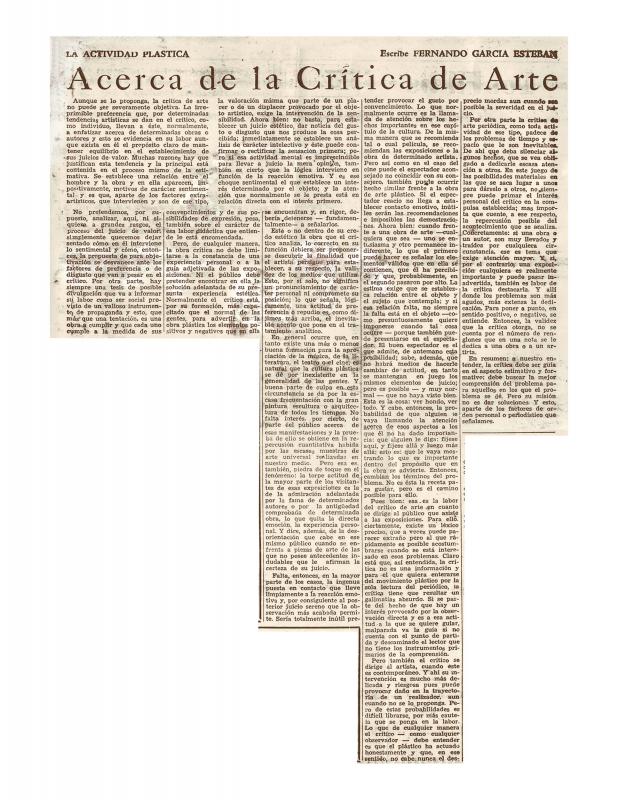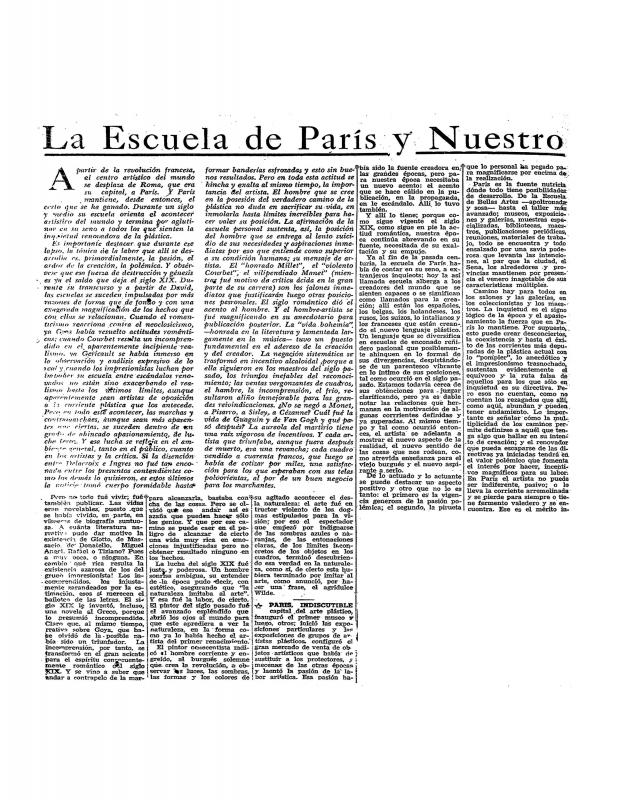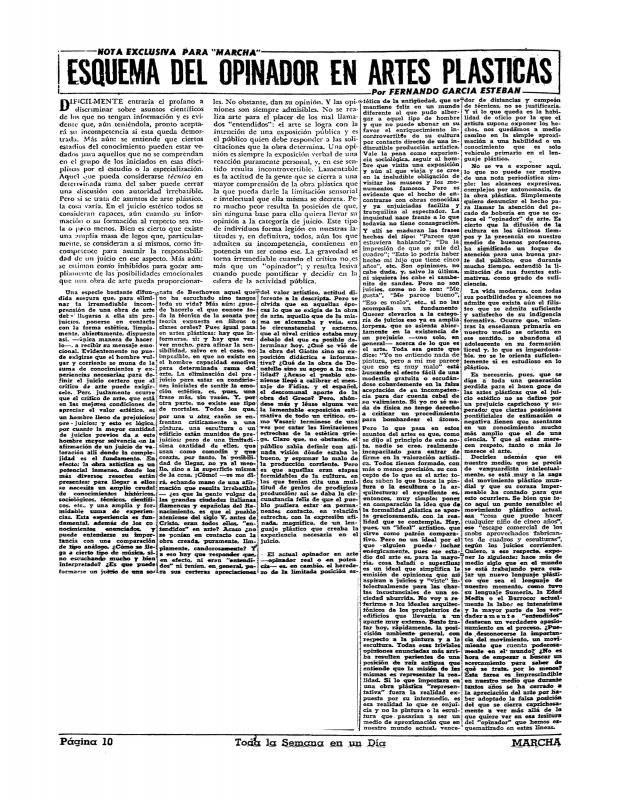This long letter from José Cúneo (1887–1977) to critic Fernando García Esteban (1917–82) is not signed, although it can be unequivocally attributed to Cúneo because of the handwriting; furthermore, it is found in the “personal manuscripts” section of the Cúneo archive housed at the Archivo General de la Nación. Since Cúneo congratulates García Esteban on the publication of his essay Panorama de la pintura uruguaya contemporánea (1965), the document can be dated to the period when the artist was living in Uruguay. The main topic addressed is color in the work of Pedro Figari (1861–1938). While Cúneo agrees with the critic that Figari was influenced by the Italian use of color, he points out the importance of Post-Impressionist French influences as well—Les Nabis, specifically Pierre Bonnard (1867–1947) and Edouard Vuillard (1868–1940). Cúneo considers Pedro Blanes Viale (1878–1926) a great colorist, one well ahead of his generation owing to his bold use of color. Regarding his cohorts, Cúneo mentions Carmelo de Arzadun (1888–1968), Humberto Causa (1890–1925), and Andrés Etchebarne Bidart (1889–1931), all of whom developed “planismo” with vigorous palettes in their work from the 1920s. In Cúneo’s view, there is no such thing as a local or American palette, or a palette specific to the Rio de la Plata, at present. Indeed, there will not be one for some time, he believes. Cúneo’s analysis of Figari is interesting because it is different from others who tend to focus on thematic, instead of formal, questions. [For further reading, see the following texts by Fernando García Esteban in the ICAA digital archive: “Acerca de la crítica de arte” (doc. no. 1227280), “La Escuela de París y Nuestro Medio Artístico” (doc. no. 1227399), and “Esquema del opinador en Artes Plásticas” (doc. no. 1227298)].



